▹ Vernal pools are unique seasonal wetlands that are mostly precipitation-fed. The term “vernal” relates to 'spring', as these pools often appear and fill to capacity with spring rainfalls and snowpack melting. They are short-lived and dry out by early to mid-summer, then they may refill partially in the fall. They support rich and diverse faunal communities which are mostly specific to those unique habitats of special concern.
In this lesson, the participants will be able to develop a deeper understanding of vernal pools and learn about how we can help protect them. We will also explore their faunal inhabitants, along with their characteristic features and roles in the ecosystem.
Good pond and pool exploration principles apply anywhere. What may differ are the species that live in those water habitats depending on where they are located. Here, we use the example of the species specific to the location where EwA runs vernal pool events in Massachusetts. Make sure to know what are the species that are unique to your location: a simple google search goes a long way to find all that...
Fun explorations to you all! ツ
Type » Lesson (ideal for a small size group up to 10 participants)
Level » Explorer
When? » All year long; preferably early spring to late summer
Where? » Outdoors!
Time » ~2hrs+
Themes & Skills
Focus ⋆ Life Science ⋆ Environmental Awareness ⋆ Natural Processes/Cycles/Season Change ⋆ Field sampling etiquette ⋆ Ecosystem interactions ⋆ Adaptation/Lifecycle
The participants will be able to:
- understand the importance of vernal pools,
- observe the floral and faunal communities typical of these habitats,
- explore how environmental factors affect vernal pools and their inhabitants,
- learn how to conserve/protect a vernal pool.
Material
Mud boots ⋆ Measuring tape ⋆ Hand lens ⋆ Polarized sunglasses ⋆ A small dip net ⋆ A narrow paintbrush ⋆ Reusable shallow white containers ⋆ A spoon (preferably white) ⋆ Pencil & Paper & Observation sheets ⋆ A hat...
Activity Set
"Once upon a midnight clearing
April rains had ceased to fall
A lonely loon far off called dearly
Wood frogs, from a vernal pool,
Carefully crawled (...)" —Leah Stetson
Puddles are fun, but then you have 'vernal pools', that bring exploration to an entirely different level! These unique ephemeral habitats provide a perfect opportunity to learn about the life of their small and macroscopic inhabitants. Be quick though: these pools disappear quickly!
☆ Understand » The Importance of Vernal Pools
Vernal pools can occur almost anywhere—in forests, fields, shrub swamps, marshes, or in gravel pits. They can be smaller than a tenth of an acre or larger than two acres. Essentially, vernal pools are wetlands that are or become isolated while containing water, are utilized by indicator species, and have wet-dry cycles that preclude permanent populations of fish [KL09]. In the Northeastern United States, these pools are most visible during the springtime. They are usually found in a natural or man-made depression that lacks a permanent outflow.


A Fairy shrimp [» our iNaturalist sighting record]
Vernal pools are important for biodiversity, both locally and globally. For a species with a narrow distribution, a particular vernal pool might be the only place on earth where that animal is found. If that pool gets destroyed, then the species will get extinct. For a species with a broad distribution, individual vernal pools are essential for sustaining their local populations. The elimination of these pools might result in the extinction of that species in a particular area. For example, in Massachusetts, the delicate yet complex Fairy shrimp is known to a small number of pools, and the Spadefoot toad is known to be present only in 40 sites in the entire state.
Vernal pools serve as an important water source for all kinds of wildlife. They also make exceptional corridors in the overland passage of various amphibians and reptiles as they move from one wetland to another [KL09].
⋆⋆⋆


A young endangered marbled salamander being released in a local woodland [» EwA's iNaturalist sighting record]
Among those species, some vertebrate and invertebrate species are totally dependent upon vernal pools for all or a portion of their lifecycle. Such animals are known as “obligate” or “direct indicator” species of vernal pools.
Other species might use vernal pools for various activities in their lifecycle but not all, and are able to successfully complete their life in other types of wetland habitats (such as permanent pools). Such species are called “facultative” vernal pool species (also known as “indirect indicators”).
In Massachusetts, for example, the vernal pool obligate species are the wood frog, the spadefoot toad, four species of salamanders (the spotted salamander, the blue-spotted salamander, the Jefferson salamander, and the marbled salamander), and two species of fairy shrimp. The facultative species include most of the other remaining frogs, few reptiles, fingernail clams, amphibious snails, insect larvae (dragonfly, damselfly, caddisfly larvae), and leeches.
Discussion » What are some special strategies that vernal pools species use?
☒ Due to the seasonal nature of the pools, both animals and plants living there have some adaptation to help them survive in these challenging environments. There are three basic types of strategies:
- get off to a fast start,
- mature early or rapidly,
- live a prolonged period of time without water.
☒ Some amphibian species (e.g. wood frogs, mole salamanders) travel to vernal pools to lay their eggs shortly after the first spring showers. Other species, such as the fairy shrimp, leave eggs at the bottom of the pool, which can withstand drying out in the summer and even freezing in the winter.
☒ The larvae of vernal pool invertebrates and amphibians race against time and must grow quickly once they hatch from the egg in spring. As spring turns into summer, water evaporates and the pools gradually shrink in size and sometimes may disappear altogether. The larvae must then transform into their terrestrial adult selves before the pools dry up.
☒ For reasons yet unknown, an estimated 85% of the obligate amphibians return each year to breed in birth-pool, dismissing other suitable pools and navigating through man-made obstacles like roads, construction sites, golf courses, and other forms of human disturbances [CE04]. Note that 'site fidelity' for some of the species of vernal pools is a critical consideration when determining the protection of a species as a whole.
⋆⋆⋆
▹ Amazing Animals that Use Vernal Pools
☆ Track & Observe » Safe Pool Explorations
Before visiting a vernal pool, make sure to have read first both the EwA Wetland Etiquette and the EwA Casual Herping Rules so as to minimize your ecological footprint and disturbance in these fragile habitats.
Finding a Pool
First things first. For exploring a pool, well... you need a pool!
It is actually not too hard to find one. There may be one right in your backyard, or somewhere out of view on your property. Or maybe you spotted one while hiking, biking or walking in a wilderness area.
In the winter, when the pools are dry, they can sometimes be identified by the presence of dark, matted leaves within a depression in the ground.
Here are a few characteristics that may help you notice dry pools [MM16]:
• Check for a flat topography with variability, especially depressions in the landscape. Areas with several or a chain of depressions have increased value as vernal pool habitat.
• Evidence of vernal pool hydrology:
- Leaves darkened by water stains or a film of sediment. You may need to brush away recently fallen leaves to reveal the stained layer
- Siltation marks or water stains on surrounding trees or vegetation
- Trees with buttressed or stilt roots
- Sphagnum moss around the edge of a depression
- Wetland plants growing in a dry depression
Some pools refill in fall or early winter from groundwater or rainfall. Pools may be evident from a distance in a leafless landscape. Look for pools in late fall and into winter prior to significant snowfall. The silvery sheen of a frozen pool surface may indicate a vernal pool. Note the location of these pools for a spring follow-up visit.
If you don't know of any pools, then areas marked as wetlands on the topographic maps are good places to start.
For instance, below is a map of an area and its pond where we spend a lot of time monitoring phenology and mapping biodiversity. The little blue plant icons (2 sets of them) on the map indicate wet areas (other than the obvious pond), and we can count here 5 certified vernal pools (5 blue crosses).
Wherever you live, you can search the internet with keywords such as ‘vernal pool’ ‘map’. For instance, in Massachusetts, where we run live vernal pool events, such a search returns multiple hits including the Natural Heritage Endangered Species Programs (NHESP) Massachusetts Aerial Photo Survey which indicates potential Potential Vernal Pools locations. You can also check with your local conservation commission for information about the known pools which are on public land.
Exploring the Pool
So, you found a pool, and -say- you know it's not certified. Then, is that pool that you're looking at indeed a vernal pool? That's where 'investigation' comes into the picture.
After finding a potential vernal pool, record the date, time of the day, and the exact location of the pool (you can use Google map or other GPS phone app or device). Since vernal pools change seasonally, that kind of information will help you find that pool again throughout the seasons to experience the natural cycle of these wonderful habitats.


A salamander (larval stage) [» our iNaturalist sighting record]
Is it an isolated body of water? Vernal pools are almost always completely or partially surrounded by forests, woodlands, or savannas [CE04]. This characteristic sets them apart from pools in open landscapes which harbor species of emergent marsh, wet meadow, wet prairie, and so forth.
Try to measure the pool area using a measuring tape.“A picture is worth a thousand words” Take detailed photographs (if the vernal pool is large, take a panorama or multiple shots from different angles).
This kind of data is useful when sharing information on social platforms such as iNaturalist, or when certifying the pool so as to have it protected.
☒ Explore the Critters!
This is the fun part. A small net is perfect to capture invertebrates and vertebrate larvae. Swipe your net through the water randomly (yet cautiously and following proper herping etiquette so as to avoid harming any of the critter and hidden wildlife). Dump slowly the content in your shallow container along with some water.
Interestingly, you will find various critters by netting at the water surface (e.g. fairy shrimps, water striders, mosquito larvae, backswimmers, water boatman etc.) and in the leaf litter (e.g. chironomid midge, mayfly larvae, daphnia etc.)
Take notes, draw a rough sketch and take photographs of the specimen you're describing. Use a ruler for scale reference (as shown in the salamander pic above). After observation, make sure to return them to the pool along with the water (again following proper herping etiquette).


Spotted salamander egg mass [» our iNaturalist sighting record]
Amphibian egg masses can be found by looking for them at the water surface or attached to vegetation or fallen logs below the surface.
You can cast a shadow on the surface to eliminate reflections (or wear polarized sunglasses). Using a hand lens help having a better view of the masses. Do not remove the egg masses from their attachment sites. Never ever transfer egg masses between pools.
Again, take notes, make a rough sketch and take photographs.
☒ Remain alert -all your senses open
Depending on the time of the year, you might hear the mating chorus of wood frogs or the loud peeping of the spring peeper. Record your auditory observation with your phone.
The smell of the mucky soil in those pools is quite unique and part of the experience too! Describe your olfactory experience for future references.
Beware of deep water, muddy bottom pools, submerged objects, and drop-offs.
Have the lowest impact possible, and always keep in mind how fragile the vernal pool ecosystem is. A recent study found that widely used repellents are lethal for salamanders. Do not wear DEET and any harmful chemicals that make most of the insect repellents and sunscreen if you intend to enter the water and sample. Never enter a pool wearing clothes or shoes that are coated with permethrin. Permethrin equates to death for many pool species. Have someone ponding for you (and don't touch any critter), or plan to come back later free of those chemicals. The pool inhabitants will thank you!
☒ Share your findings
At the end of the activity, gather together in a quiet place, take out your notes and share your experience and findings with your team members. Use your hands-on experience to educate others, your friends and family, neighbors, schools, and the community.
⋆⋆⋆
☆ Actively Protecting Pools » Certification
Vernal pools are very unique habitats. They are temporary yet necessary for the survival of many vertebrate and invertebrate species. Visiting a vernal pool is really special and observing the specialized species that inhabit this type of wetland habitat can be a rewarding experience.
Discussion » Do vernal pools need conservation?
Vernal pools have declined at an alarming rate throughout all of North America. This loss extends from coast to coast ([KJ96], [PE00], [CA08]).
In most cases, vernal pools have been filled, destroyed, or degraded by urban development and agricultural activities. They are often overlooked on development sites because they appear dry in some months and resemble their surrounding woodland. Even the removal of trees in a forest surrounding a vernal pool during the construction of houses, lawns, driveways can degrade the habitat, resulting in the elimination of the entire amphibian population residing in and around that pool.
What you can do » Identify & certify
Certifying a vernal pool is the best possible way to protect it. Certification is an evidence-based documentation process where a citizen collects enough evidence of the presence of a vernal pool and its indicator species and submits these documents and location maps to the NHESP.
In the US, anyone can identify and even certify a vernal pool, so that it gets special protection.
And here in Massachusetts, originally defined and protected under the Massachusetts Wetlands Protection Act regulations, Certified Vernal Pools now also receive protection under:
- Title 5 of the Massachusetts Environmental Code,
- Section 401 of the Federal Clean Water Act,
- the Massachusetts Surface Water Quality Standards which relate to Section 401, and
- the Massachusetts Forest Cutting Practices Act.
These regulations help to prevent direct impacts to certified vernal pools and to minimize indirect impacts. The Department of Environmental Protection (DEP) is responsible for the implementation of these regulations (except for the Forest Cutting Practices Act, administered by the Department of Conservation and Recreation) and has designated specific staff as vernal pool liaisons [DEP].
Finding and certifying vernal pools are actually almost always done by volunteers and concerned citizens. Once you found a vernal pool and considered it needs protection; you must submit the evidence to the Natural Heritage program to complete the certification process.
Check with your local conservation institutions what is the certification process in your area.
If you reside in Massachusetts, you can follow the certification process described here:
- Vernal Pool Certification in Massachusetts (by the Vernal Pool Association)
- Guidelines for the Certification of Vernal Pool Habitat (Natural Heritage & Endangered Species Program)
Then, you can submit online the information that you gathered in the field on the Massachusetts Vernal Pool & Rare Species (VPRS) Information System.
Still in Massachusetts, if you live close by to where we run our Biodiversity Citizen Science programs, join our vernal pool awareness & protection project. We're looking for citizen scientists to collect data and certify the candidate vernal pools of the Middlesex Fells Reservation (following our field protocol).
Remember, this is a unique and specialized habitat that you can help protect. Always act in accordance with the law: if that pool is on private property, then make sure to obtain the land owner's permission for gathering data and conducting surveys -and as recommended by The Executive Office of Energy and Environmental Affairs (EEA).
So go ahead look for those pools and go through the certification process. Please join us in finding and certifying vernal pools wherever you may be. And come and meet us at one of our vernal pool events if you live close by!
⋆⋆⋆
▹ EwA Vernal Pool Awareness & Protection Field Protocol
Naturalist Notes
We never miss an opportunity to get outside as often as we can throughout the seasons. Life is busy for all, but we make sure we set an hour aside every week to explore our local biodiversity with our Nature journal and with the iNaturalist App.
Every time we go out for doing chores and such, we check for movements of wildlife, record trees, and bugs, pop out our journal for a quick sketch. Once home, we check our identifications looking through our guides and browsing websites that list local species. Doing so we solidify our learning and knowledge, we get more familiar with our surroundings each time, and we grow our appreciation of what we have right here at home.
References
» EwA Wildlife Etiquettes
» Ecology
[CE04] Vernal Pools: Natural History and Conservation by Colburn, E.A. (2004). The McDonald and Woodward Publishing Company, Granville, OH. 426 pp.
[RM18] High Mortality in Aquatic Predators of Mosquito Larvae Caused by Exposure to Insect Repellent by Rafael M. Almeida and al. (2018)
[CA08] Science and Conservation of Vernal Pools in Northeastern North America. Calhoun, A.J. and P.G. deMaynadier. (2008). CRC Press, New York, NY. 363 pp.
[GJ93] Importance of Small Wetlands for the Persistence of Local Populations of Wetland-associated Animals by Gibbs, J.P., (1993) In Wetlands 12 (1), 25–31.
[KJ96] Species Richness, Endemism, and Ecology of Crustacean Assemblages in Northern California Vernal Pools by King, J.L. & al. (1996) Hydrobiologia 328: 85-116.
[KL09] A Field Guide to the Animals of Vernal Pools by Kenny, L.P., and Burne, M.R. (2009). Vernal Pool Association, PO Box 2295, Peabody, MA and MA NHESP, Westboro, MA. (reprinted 2009)
[PE00] Vernal Pool Conservation in Connecticut: an Assessment and Recommendations by Preisser, E.L., J.Y. Kefer, J.D. Lawrence, and T.W. Clark. (2000) in Environmental Management 26(5): 503–513.
[MM16] Identifying and Documenting Vernal Pools (in New Hampshire) by Marchand, M. (3rd edition)
[SJ00] Relationships Among Isolated Wetland Size, Hydroperiod, and Amphibian Species Richness: Implications for Wetland Regulations by Snodgrass, J.W., & al. (2000). in Conservation Biology 14 (2), 414–419
» Massachusetts Vernal Pool Conservation & Protection
EwA Vernal Pool Awareness & Protection Field Protocol
[GM11] Biodiversity in an Isolated Suburban Reservation: Amphibians in the Middlesex Fells by Gage, M.W. (2011)
[BM01] Massachusetts Aerial Photo Survey of Potential Vernal Pools by Burne, M.R. (2001). Natural Heritage and Endangered Species Program, Massachusetts Department of Fisheries and Wildlife, Westborough, MA.
[NHESP] Massachusetts Natural Heritage and Endangered Species Program (NHESP) (2009) » NHESP Guidelines for the Certification of Vernal Pool Habitat.
[VPC] Vernal Pool Certification in Massachusetts (by the Vernal Pool Association)
[DEP] Massachusetts Vernal Pool Protection (MassWildlife's Natural Heritage & Endangered Species Program) » Regulations & Certification Information.
![]()

 Ephemeral Living » Vernal Pool Explorations
Ephemeral Living » Vernal Pool Explorations
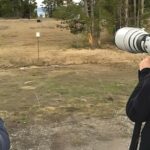

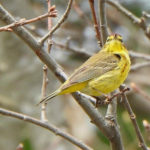
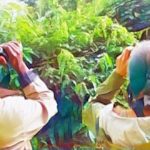
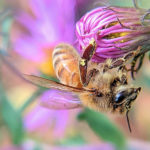
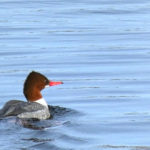
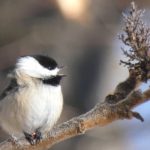
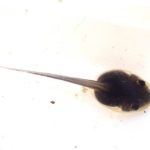
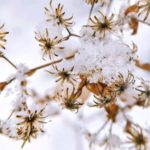

 EwA Acknowledgement of Biodiversity, Land, and People
EwA Acknowledgement of Biodiversity, Land, and People What We Do
What We Do Learn – Practice – Inspire
Learn – Practice – Inspire About us
About us Get Involved
Get Involved Citizen Science
Citizen Science EwA CitSci in Pics
EwA CitSci in Pics Act Now » Be an EwA Naturalist
Act Now » Be an EwA Naturalist Giving Science Back to the People
Giving Science Back to the People EwA Urban Biodiversity Program
EwA Urban Biodiversity Program EwA Ecological Projects
EwA Ecological Projects EwA Nature Volunteering
EwA Nature Volunteering EwA Biodiversity & Climate Internship
EwA Biodiversity & Climate Internship EwA Conservation Reports
EwA Conservation Reports EwA CitSci Forum
EwA CitSci Forum EwA Events
EwA Events News
News Store
Store Give
Give